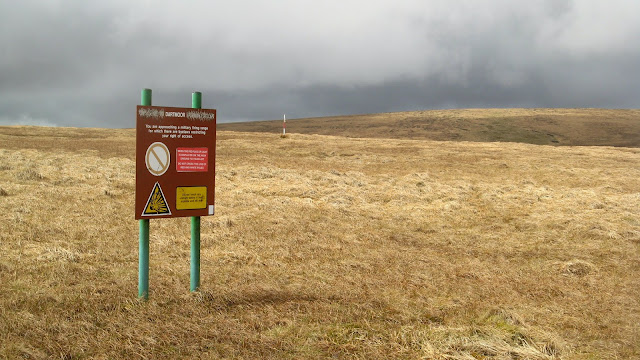The first snow of Autumn fell on Dartmoor today. Snow has fallen in 7 of the last 11 Novembers. Perhaps the month should be renamed 'Snovember'. The dusting of the white stuff has made me reflect on the Summer of 2015, when my relationship, and perhaps many people's relationship with Dartmoor and Letterboxing seems to have changed.
The last walk I recall completing was around Eylesbarrow. Finding several letterboxes on the slopes of the hill, and in the valley near the bronze age Drizzlecombe menhir. Taking some time to explore the ruins and remnants of the old tin mine which closed in the 1850s - roughly when James Perrott established his Cranmere Pool letterbox. Human impact on the moor is long lasting. Even when the memories fade, the legacy remains. Set in stone. A monument to past glory. Bronze age Britons vanish. Tin mines are exhausted of their ore and the miners leave. The landscape they leave behind has changed irretrievably.
The confirmation of my Homebase Garden Academy status this Summer was fantastic for me professionally and personally. A career change into the Great Outdoors was always my ambition. An ambition that can be traced back to the Summer of 1991, when I made a connection with the Dartmoor environment - introduced to me through Letterboxing.
In the 25 years that followed, the Letterboxing landscape has also changed, almost beyond recognition. I have spoken before of the developments that have occurred. Those since the Millenium have altered the hobby greatly, such as GPS and the boom in Geocaching. This year, more than any I can recall, has seen the largest number of Letterboxers actively retire from the hobby. Various reasons may account for this. The end of an era seems an over-the-top way to describe it, but the class of 1985 have finally chosen to hang up their compass for the last time in greater numbers than ever. The landscape they leave has changed. The resulting hobby must face some challenges ahead. I relish a challenge though! Whilst I grapple with my growing gardening career, please forgive my long silences on this blog as I walk less and blog even more rarely. I still care very much for Dartmoor, and love Dartmoor Letterboxing. Don't forget you can see what I'm doing in the 12 month academy on my other blog though. Appropriately named perhaps: What goes down, must come up!



























































